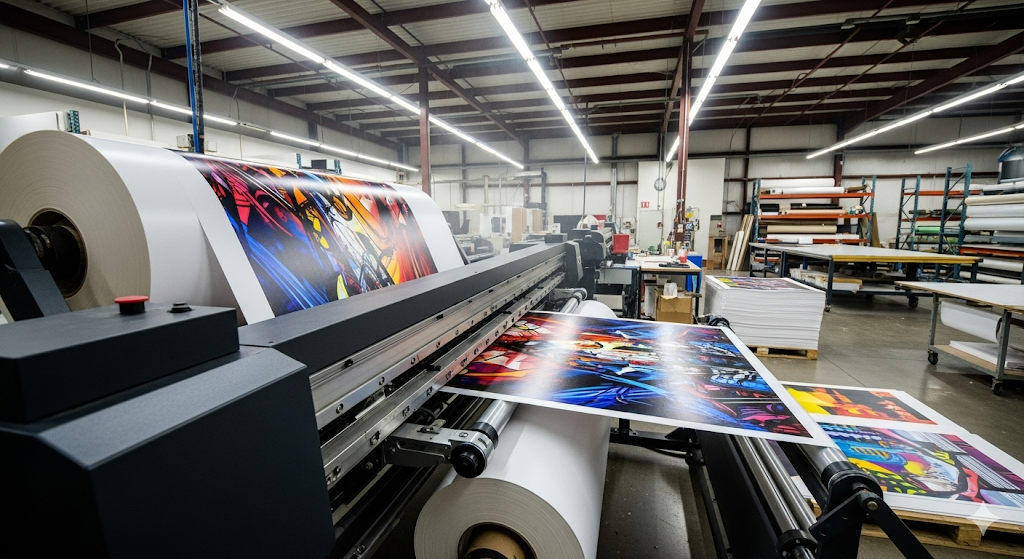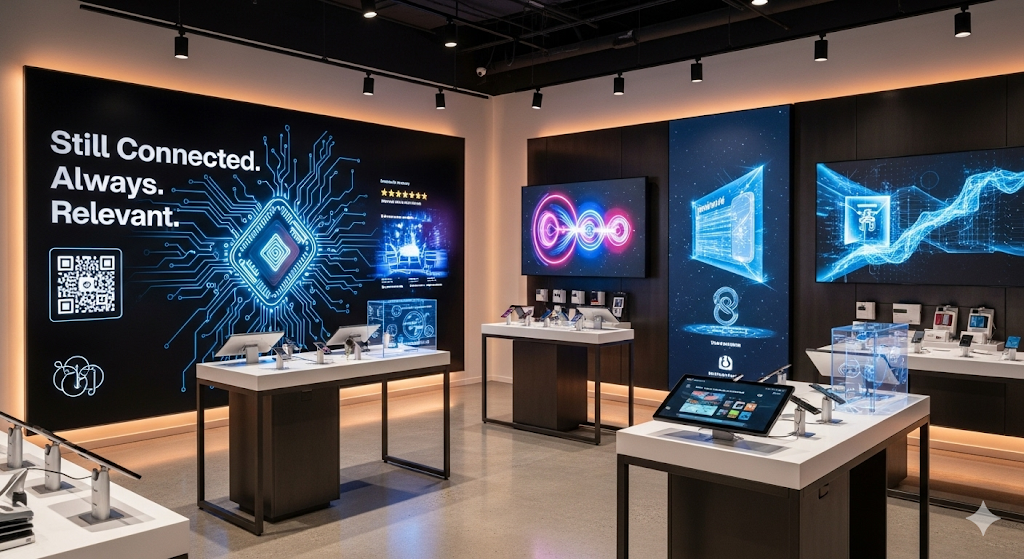A Behind-the-Scenes Look at Large Format Printing: How Your Graphics Come to Life
Large format printing has transformed the way businesses and creative professionals communicate visually, delivering stunning graphics on surfaces too large for traditional presses. From vibrant trade show banners to eye-catching retail displays, the wide format print process brings ideas to life with precision and scale. This blog dives into each step of large format printing, showing how raw materials evolve into impactful graphics through advanced technology, expert craftsmanship, and strategic installation.
Albert Basse Associates unpacks the intricacies of large format graphic production, illuminating the journey from digital file to finished output. Readers will discover the machinery, materials, color workflows, and post-print techniques that converge to create memorable visual experiences. Along the way, real-world applications and best practices reveal why custom banner printing and wide format projects continue to lead in marketing effectiveness.
What is large format printing and how does it differ from standard printing?
Large format printing refers to producing prints significantly larger than those possible on conventional desktop or sheet-fed machines. This method handles substrates up to several feet wide—ideal for banners, signage, wall murals, and vehicle wraps. Unlike standard printing, which caters to stackable sheets like business cards or flyers, large format printing relies on roll-to-roll systems and specialty inkjet heads to deliver expansive, continuous graphics.
The wide format print process typically uses inkjet or direct-to-substrate technologies, accommodating various materials such as vinyl, fabric, mesh, canvas, and rigid boards. By contrast, traditional offset printing requires plates and is optimized for high-volume, smaller format runs. Large format printers enable immediate customization and rapid turnaround, making them indispensable for on-demand promotional graphics, architectural wallpapers, and retail displays.
Large Format Printing Equipment: Printers and Inks
Large format printing relies on specialized hardware that handles wide media and precise ink placement. Printers range from basic roll-fed inkjet devices to sophisticated hybrid flatbed machines capable of printing directly onto rigid substrates. Each system uses advanced print heads, precision stepper motors, and UV or solvent-based inks to ensure vibrant, durable output.
Large format printing equipment often integrates high-resolution print heads, driving dots-per-inch (DPI) figures above 1,200 for crisp detail and smooth gradients. The inks vary by application: aqueous dye inks for indoor posters, solvent inks for outdoor durability, and UV-curable formulations for instant curing and material versatility. Proper selection of printer and ink ensures longevity, color fidelity, and compatibility with the chosen substrate.
Table 1: Comparison of Common Large Format Printer Types
| Printer Type | Ink Type | Media Compatibility | Typical Applications |
| Aqueous Inkjet | Dye/Pigment | Roll media (paper, canvas) | Indoor posters, fine art |
| Solvent Inkjet | Solvent | Vinyl, banners, outdoor flex | Outdoor signage, billboards |
| UV Flatbed | UV-Curable | Rigid boards, glass, metal | Point-of-purchase displays |
| Latex Inkjet | Water-based latex | Fabric, self-adhesive vinyl | Retail graphics, vehicle wraps |
The evolution of large format graphic production equipment
Early wide format devices used basic monochrome heads and limited color palettes, producing grainy images prone to ink bleed. Over the past two decades, print head technology and ink formulations have advanced dramatically. Piezoelectric and thermal inkjet heads now deposit microscopic droplets as small as 1.5 picoliters, enabling ultra-fine detail and seamless color transitions.
Hybrid systems blend roll-fed and flatbed capabilities, granting flexibility to print on flexible films one day and thick substrates the next. Automation features such as media feeding sensors, vacuum-assisted beds, and integrated spectrophotometers have streamlined setup and quality control. Today’s printers support variable data printing, letting businesses personalize every banner or exhibit graphic without additional plates or downtime.
Key stages in the wide format print process
Prepress and File Preparation
Before inks ever touch media, designers must optimize files for the printer’s resolution and color space. Large format projects typically require vector artwork or high-resolution raster images (300 DPI or higher at full scale). Color profiles (CMYK or extended gamut) are embedded, and bleed edges are added to account for trimming tolerances.
RIP (Raster Image Processor) software translates the digital file into machine-readable commands, handling color separations, halftoning, and ink limits. This stage ensures accurate droplet placement and consistent color reproduction across the entire print run.
Printing and Ink Application
Once the file is processed, the media is loaded—either on a roll for banners and flexible films or placed on a flatbed table for rigid boards. The printer’s carriage moves the inkheads across the surface, while the substrate advances incrementally. In solvent or UV processes, the print table incorporates heating elements or UV lamps to cure the ink immediately, preventing smudging and enabling stacking of finished prints.
A continuous flow of print heads, simultaneous across multiple channels, builds each graphic layer by layer. Advanced printers adjust head height in real time to accommodate substrate thickness, maintaining optimal ink deposition and crisp edges.
Post-Print Drying and Finishing
After printing, graphics may undergo additional curing, especially if aqueous inks were used. Hardening racks or LED bake units help achieve full ink adhesion. Once dry, the prints move to cutting tables or laminators where bleed edges are trimmed, protective films are applied, and mounting adhesives are attached.
Edge sealing and overlamination boost durability, especially for outdoor signage exposed to UV light, moisture, and abrasion. Final finishing can include grommet installation for hanging, velcro application for modular walls, or contour cutting for custom die-cut shapes.
Choosing substrates and materials for custom banner printing
Selecting the right material for a banner or display hinges on the intended environment and desired finish. Vinyl remains the go-to choice for high-strength outdoor banners, offering tear resistance and vibrant print reception. Mesh vinyl adds wind-through perforations, ideal for large building wraps where air flow matters.
For indoor murals and backdrops, synthetic fabrics provide a matte, tear-resistant surface that drapes smoothly. Foam boards and PVC offer rigid options for point-of-sale graphics, combining lightness with structural rigidity. Each substrate interacts differently with inks and finishes, so testing and proofing ensure end-use durability and visual impact.
Table 2: Common Substrates for Large Format Graphics
| Substrate | Flexibility | Durability | Typical Use Cases |
| PVC Vinyl | High | Excellent | Banners, outdoor signs |
| Mesh Vinyl | Medium | Good (wind-resistant) | Building wraps, scaffolding |
| Polyester Fabric | High | Moderate | Trade show backdrops |
| Foam Board | Low | Moderate | Exhibit panels, indoor signage |
| Canvas | Medium | Good (art prints) | Fine art reproductions |
Color management in large format printing
Achieving consistent, brand-accurate colors across multiple print jobs demands rigorous color management. Spectrophotometers measure printed color targets, feeding data back into the RIP software. This calibration process creates ICC profiles tailored to each printer-ink-substrate combination, compensating for dot gain, substrate whiteness, and ink transparency.
Regular profiling prevents drift in color accuracy over time, which can otherwise lead to mismatched prints in successive batches. Designers export PDFs in the defined color space, embedding profiles so that vibrant reds, corporate blues, and nuanced skin tones remain true from proof to final output.
Post-print finishing and installation techniques
Beyond curing and trimming, post-print processes elevate graphics into finished installations. Protective laminates—glossy, matte, or textured—guard against abrasion and UV fading. Edge finishing hardware such as aluminum extrusion frames or snap-frame kits transforms banners into taut, professional displays.
Installation methods vary: Grommeted banners hang with ropes or hooks, while adhesive-backed graphics apply directly to walls or glass. Magnetic backing permits easy swapping on metallic surfaces. For permanent signage, outdoor substrates are bolted or riveted to structures, ensuring stability in all weather conditions.
Quality control and environmental considerations
Quality checks at each stage guarantee that prints meet resolution, color, and dimensional standards. Automated vision sensors inspect for streaks, banding, or registration errors during printing. Post-production, operators perform visual audits and measure ink density to confirm compliance with client specifications.
Environmental concerns drive many modern wide format print workflows. Latex and UV-curable inks minimize volatile organic compounds (VOCs), reducing odor and workplace hazards. Waste reduction initiatives include remnant recycling programs, leftover ink reclamation systems, and energy-efficient curing lamps. Sustainability certifications such as EcoLogo or GREENGUARD build trust with eco-conscious clients.
Trends shaping the future of large format printing
Innovation in print technology continues at a rapid pace. High-speed roll-to-roll printers now churn out multi-color prints at over 2,000 square feet per hour. Nanographic printing, pioneered by certain press manufacturers, offers offset-like image quality at digital speeds. Integration of AI-driven color correction and predictive maintenance enhances uptime and reduces manual oversight.
On the materials side, biodegradable substrates and water-soluble laminates are gaining popularity. Smart graphics embedded with NFC chips let viewers tap banners with smartphones for interactive content. Augmented reality overlays and 3D-printed display components open new frontiers for experiential marketing.
How businesses leverage large format printing for brand impact
Companies across retail, hospitality, and events harness the scale and versatility of large format printing to leave lasting impressions. Retailers use vibrant window wraps and floor decals to guide customers through store promotions. Hospitality venues transform lobbies with custom murals and backlit signage that reinforce brand aesthetics.
Major sports arenas deploy massive hoardings and LED-compatible substrates to attract fans and sponsors. Even corporate offices leverage branded wallpaper graphics for motivational messaging. Such applications go beyond decoration—each graphic becomes a touchpoint in a holistic brand experience that engages visitors on a sensory level.
One retailer noted that an immersive wall mural produced through Retail Signage Printing increased foot traffic by 25 percent, demonstrating the power of well-executed visual marketing.
Integrating large format printing into marketing strategies
Marketing teams often incorporate large format assets into multi-channel campaigns, syncing print visuals with digital media. For instance, a brand might roll out a city-wide bus wrap, sector signage, and event backdrops that echo online social media graphics and email marketing visuals. Consistent messaging and aesthetics across formats reinforce brand recall.
Project managers coordinate schedules to align print delivery with launch dates, ensuring installations are live before product announcements or promotions. Strategic placement of graphics—near high-traffic intersections, at trade show booths, or inside retail windows—maximizes visibility and returns. Local campaigns in markets like Boston benefit from targeted Printing Services for Boston & Beyond, providing localized messaging and installation expertise.
Customization and personalization with digital large format printing
Variable data printing in large format enables highly personalized campaigns at scale. Retailers might produce unique banners for each store location, incorporating local landmarks or regional promotions. Event organizers can print attendee names on stage backdrops or VIP signage, creating tailored experiences that resonate more deeply.
On-demand custom banner printing facilitates last-minute changes without retooling plates or molds. Digital inkjet printers handle complex color blends and dynamic QR codes that can be scanned for real-time offers and analytics. Businesses seeking specialized solutions often partner with firms offering diverse Custom Print Products to explore unconventional formats and finishes.
Why Albert Basse Associates stands out in large format printing
Albert Basse Associates combines industry-leading equipment, seasoned print professionals, and rigorous quality standards to deliver graphics that exceed expectations. From initial file consultation to final installation, each project undergoes meticulous oversight. This dedication to excellence earned recognition from design agencies and retail brands alike, cementing its reputation for reliability and innovation.
Clients appreciate the company’s collaborative approach—designers, production experts, and installation teams sync closely, reducing errors and optimizing schedules. For those who understand that Retail Display Graphics Still Rule, Albert Basse Associates provides turnkey solutions that amplify brand presence in both urban and virtual environments.
Conclusion
Large format printing represents a fusion of art, science, and logistics, turning high-resolution digital files into impactful real-world graphics. Through advancements in printer technologies, expansive material options, color-managed workflows, and expert finishing, every stage of large format printing converges to bring brands to life at scale. Professionals seeking to leverage this medium must understand not only the hardware and inks but also the strategic value of placement, personalization, and environmental stewardship.
Albert Basse Associates stands ready to guide businesses through the intricacies of large format printing, ensuring that each custom banner printing or wide format print process yields stunning, durable, and on-brand graphics. By combining technical mastery with creative vision, the team transforms abstract concepts into visual experiences that resonate with audiences across industries.
Frequently Asked Questions
1. What is the maximum size achievable with large format printing?
Large format printers can handle materials up to 3.2 meters (about 10.5 feet) wide in a single pass. For wider graphics, multiple panels are printed and seamlessly joined during installation.
2. How long do large format prints last outdoors?
Durability depends on ink type and substrate. Solvent and UV-curable inks on vinyl typically last 3 to 5 years outdoors. Overlamination and proper installation can extend life expectancy to 7 years or more.
3. Can large format printing accommodate textured or irregular surfaces?
Yes. UV flatbed printers can print directly onto rigid, textured materials like wood and metal. Flexible substrates can also be applied to mildly curved surfaces with appropriate adhesives.
4. How does color calibration work in wide format printing?
Color calibration uses spectrophotometric measurements of printed test charts. These readings generate ICC profiles that inform the RIP software how to adjust ink deposition for accurate color reproduction on each substrate.
5. Is wide format printing environmentally friendly?
Modern practices incorporate low-VOC latex and UV inks, energy-efficient LED curing, and material recycling programs. Selecting eco-certified substrates and laminates further reduces the environmental footprint.


